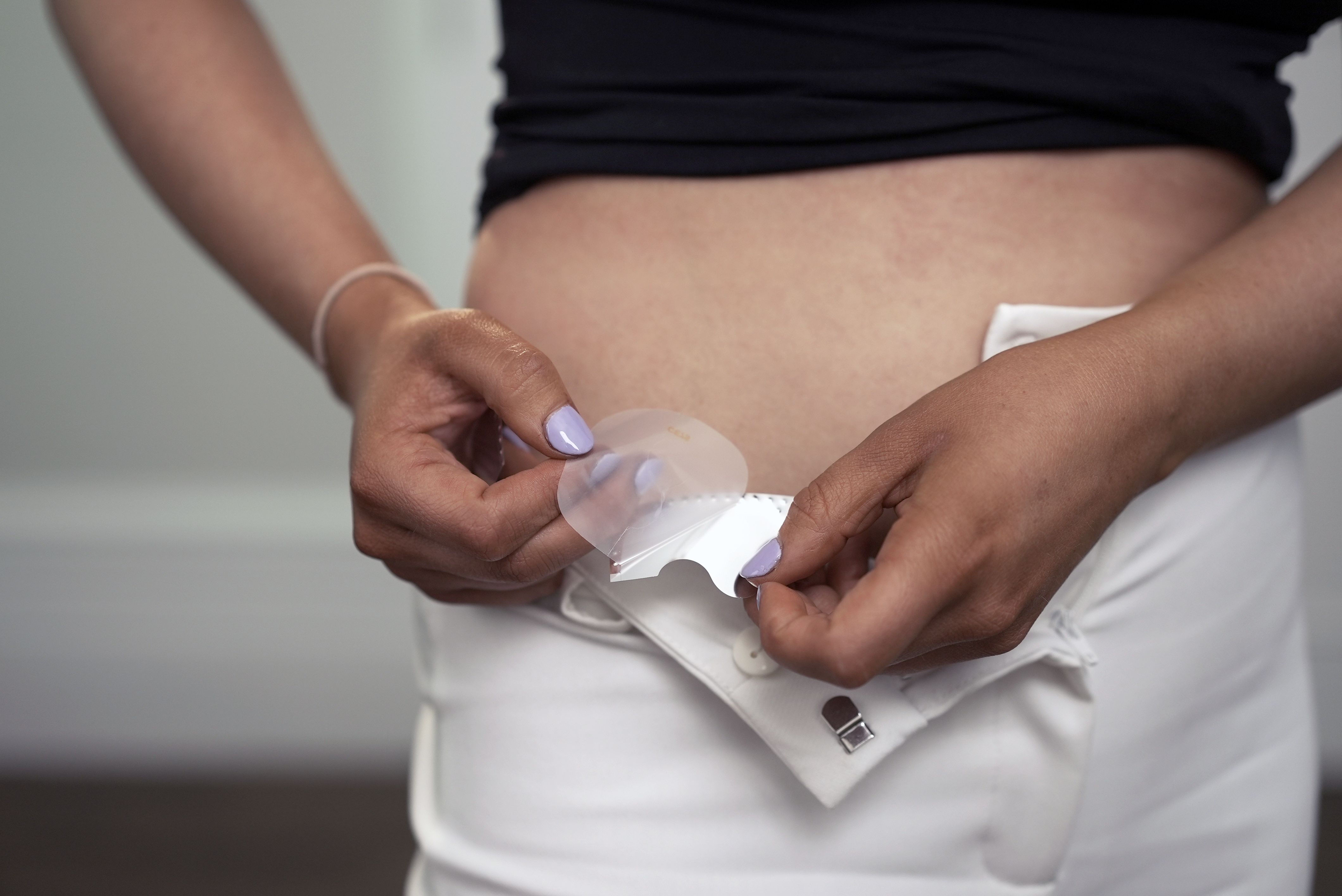Understanding Evorel, Estradot, Estraderm MX, FemSeven Mono and Progynova for improving perimenopause and menopause symptoms and future health
• Replacement estrogen can be given during perimenopause and menopause to improve symptoms and future health
• Estrogen-only patches contain estradiol, a body identical hormone
• Understand the benefits and risk of estrogen-only patches
During perimenopause and menopause, estradiol (estrogen) levels fluctuate and then decline, which can trigger symptoms. Estradiol-only HRT is prescribed to relieve these symptoms - it works by replacing the estradiol that is lost. As well as reducing menopausal symptoms, taking HRT can reduce your future risk of diseases, including osteoporosis, diabetes, dementia, cancers and cardiovascular disease.
Estradiol can be given either through your skin, known as transdermal estradiol, or orally in the form of a tablet. Estradiol-only patches are a type of systemic HRT, which means when the sticky patch is applied to your skin it releases estradiol directly into your bloodstream where it travels through your entire body and improves symptoms.
What types of estrogen-only patches are available?
Brands such as Evorel, Estradot, Estraderm, FemSeven Mono and Progynova all contain the hormone estradiol. This is identical to the estradiol that’s produced by your body.
Evorel is available in four strengths: 25mcg, 50mcg, 75mcg and 100mcg
Estradot is available in four strengths: 25mcg, 50mcg, 75mcg and 100mcg
Estraderm MX is available in four strengths: 25mcg, 50mcg, 75mcg and 100mcg. Most women start on 50mcg but your healthcare professional will titrate this over time according to your symptoms.
FemSeven Mono is available in three strengths: 50mcg, 75mcg and 100mcg
Progynova is available is two strengths: 50mcg and 100mcg
The dose will depend on many factors such as your symptoms, age, prior use of HRT and how you absorb through your skin into your body.
Estradot patches are smaller than most other HRT patches (and the size of the patch increases inline with the dosage) and tend to stick well. However, there are sometimes supply issues with Estradot – at present [1], there is Serious Shortage Protocol (SSP) in place for Estradot, which means pharmacists can substitute an item in low stock for another.
Progynova contains estradiol valerate, which means it is not body identical so may have different metabolic effects.
RELATED: HRT: How to find the right dose & type
What are the benefits of estrogen-only patches?
Patches can be a convenient way to take HRT as they’re not messy to use and don’t need to be applied every day. This is particularly beneficial if you take a higher dose, as it means you won’t have to apply several pumps of gel or wait for it to dry before you get dressed.
FemSeven Mono patches can be convenient as, unlike the other brands, they only need to be changed once per week. However, many women find that they do not stick well to the skin.
In all these estrogen-only patches, the estradiol is absorbed through your skin so there’s no increased risk of blood clot or stroke, and it can also be taken if you have migraines.
What are the disadvantages of estrogen-only patches?
For most people, the benefits of HRT outweigh any risks.
Some women can find their patch doesn’t adhere well to their skin or can cause irritation – in these instances the estradiol will not be absorbed as effectively so you should speak to your healthcare professional who may recommend a different brand or estrogen gel or spray.
RELATED: Estrogen in patches, gels or sprays
Can I expect any side effects?
It often takes a few months for your body to adjust to taking any HRT, so you may notice some mild side effects. The most common are breast discomfort, leg cramps, and breakthrough bleeding or spotting. These usually settle over time, but talk to your doctor if side effects persist for longer than the first six months.
If you notice sticky marks on your skin when you change a patch, these can be removed with baby oil and a dry flannel.
How do I use estrogen-only patches?
You should apply your patch to clean, dry skin below your waist. You can choose to stick it to your tummy, hip, bottom or thigh – wherever suits you best. You might notice some skin irritation when you remove a patch, so it’s a good idea to vary the location rather than apply it to the same place each time.
Evorel, Estradot and Estraderm MX contain enough estradiol for three or four days so the patch should be changed twice per week on the same days, and at roughly the same time of day – for example, Monday and Thursday.
FemSeven Mono and Progynova should be changed once per week, on the same day, and at roughly the same time.
RELATED: HRT easy prescribing guide
What else do I need to know?
If you still have your womb, you’ll also need to take a form of progesterone or progestogen, which is usually given as a tablet or via the Mirena coil. This is because taking estrogen can thicken the cells in the lining of your womb but taking progesterone or progestogen protects the lining of the womb.
Some women take progesterone if they have had a hysterectomy or have a Mirena coil in as there are many benefits from taking progesterone – watch my video All About Progesterone.
One 50mcg patch is roughly equal to two to three sprays of Lenzetto, two pumps of Oestrogel, 1mg sachet of Sandrena gel or 1mg estrogen only tablet. You can read more about doses of commonly prescribed HRT in my HRT Easy Prescribing Guide.
It is worth noting that absorption can be variable – Newson Health’s research on absorption highlighted that some women need higher doses than others for adequate absorption through their skin [2]. Some women may need to use more than one patch, for example, while others may notice absorption varies according to where they place their patch, or depending on their skin type.
Vaginal hormones, including estrogen and prasterone, can be taken – instead of or as well as – estrogen-only patches and can help alleviate symptoms associated with Genitourinary Syndrome of the Menopause (GSM), including vaginal dryness, discomfort or pain during sex, irritation or burning of the vulva or vagina, needing to go to the toilet more often and feeling very desperate to go, and urinary tract infections such as cystitis.
RELATED: Vaginal hormones: what you need to know
Resources















